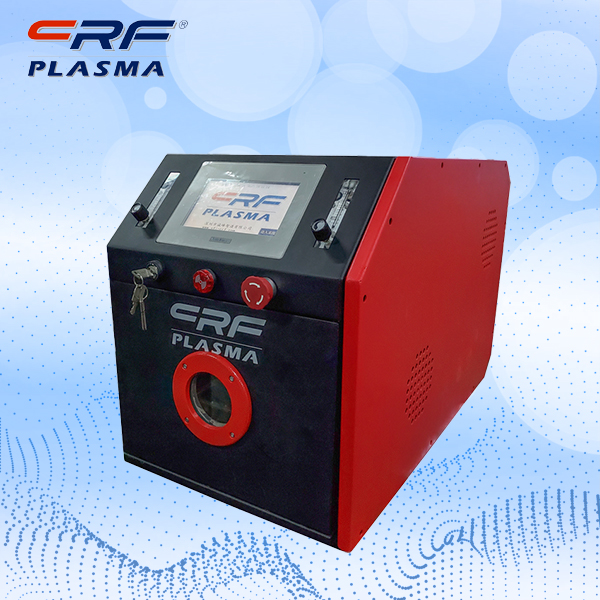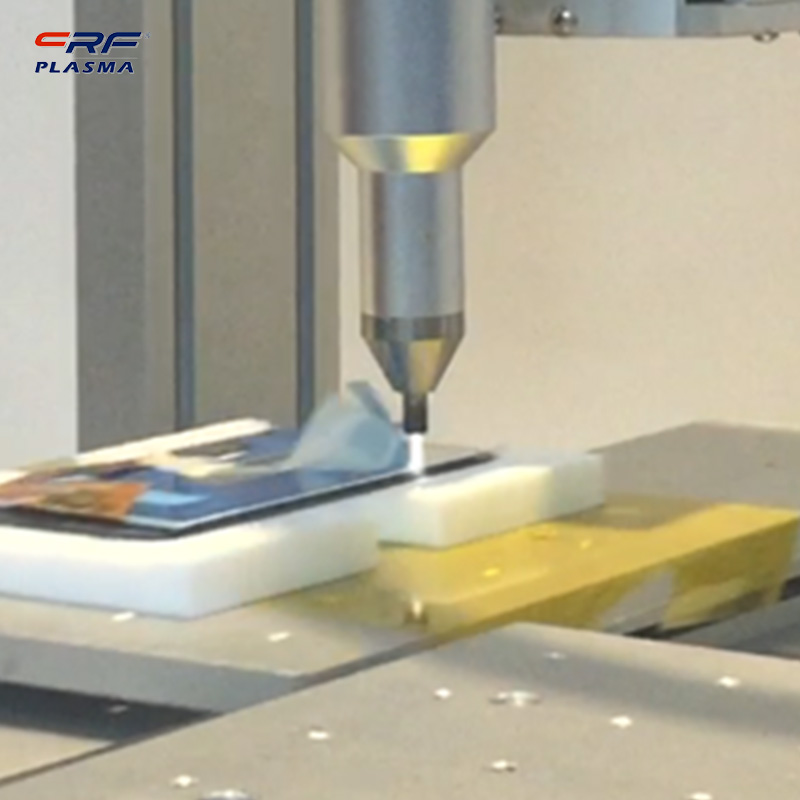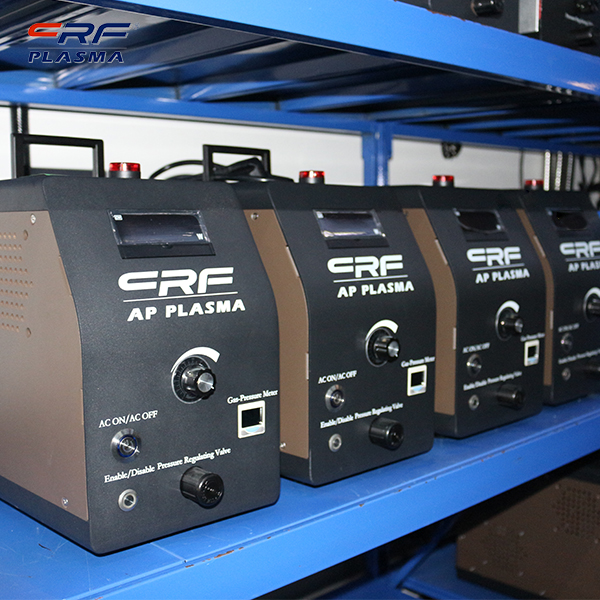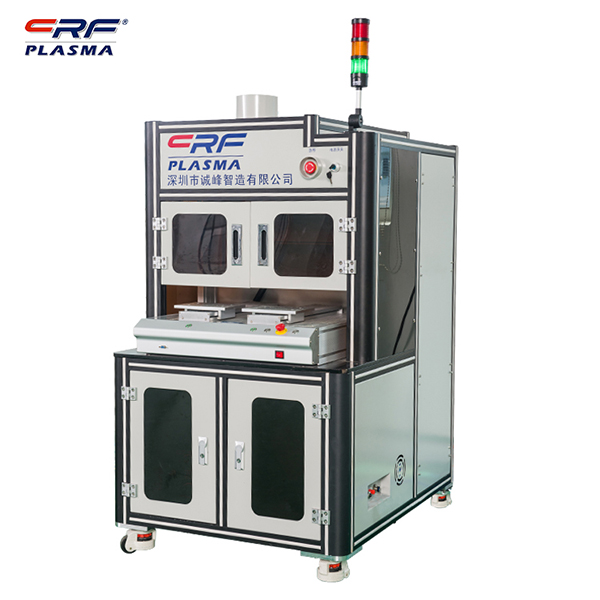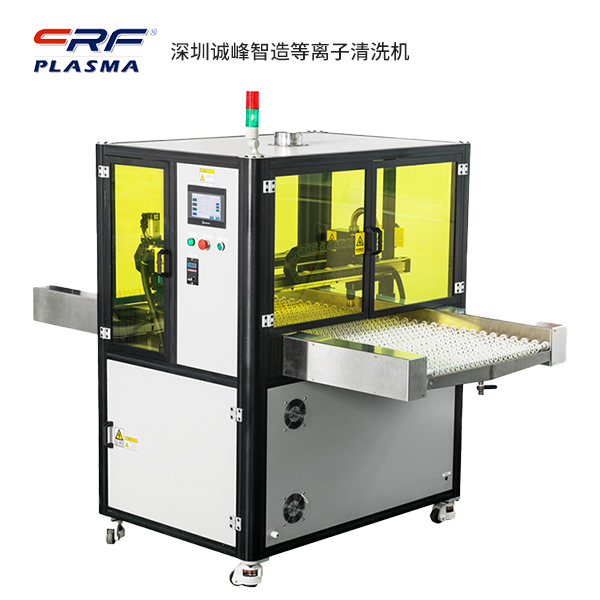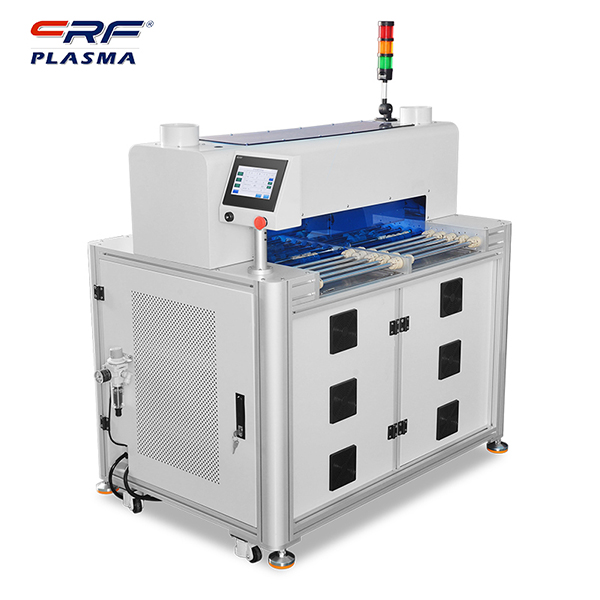
Welcome to Shenzhen Sing Fung Intelligent Manufacturing Co., Ltd.
E-mail:shaobo@sfi-crf.com
SiO polymer electronic paste ultra-fine glass powder polymerized on the surface of plasma-modified powder
- Categories:Technical Support
- Author:Plasma cleaning machine-CRF plasma plasma equipment-plasma surface treatment machine manufacturer-chengfeng intelligent manufacturing
- Origin:
- Time of issue:2022-04-01
- Views:
(Summary description)SiO polymer electronic paste ultra-fine glass powder polymerized on the surface of plasma-modified powder: The ultra-fine powder in the electronic paste is generally inorganic powder, the large particle size is generally not more than 15pum, the average particle size is less than 5pum, the specific surface area is large, it is easy to agglomerate to form large secondary particles, and it is difficult to be used in organic carriers. dispersion. The uniformity and stability of the dispersion in the organic carrier have a great influence on the printing performance of the paste and the performance of the prepared electronic components. Using hexamethyldisiloxane (HMDSO) as a monomer, a thin layer of silicon oxide polymer was polymerized and coated on the surface of inorganic glass powder by plasma to improve its dispersibility in organic carrier and adjust the rheology of electronic paste , printing suitability and sintering performance, improve the performance of electronic paste to meet the requirements of new electronic components and screen printing technology progress. The parameters affecting plasma polymerization are: background vacuum, working pressure, ratio of monomer HMDSO to working gas argon, power supply, processing time, working temperature, etc. For the untreated powder tablet, when the contact angle is measured, the potassium permanganate aqueous solution with a mass fraction of 0.1% is instantly absorbed on the surface of the powder tablet, and after the treatment, the droplet can be stabilized on the powder tablet. Exists without wetting the powder. The longer the discharge time, the higher the monomer concentration in the gas, and the higher the power supply, the larger the powder contact angle. This is mainly because the more low-surface-energy SiOx polymers formed by polymerization on the powder surface, the stronger the surface hydrophobicity. When the SiO polymerized on the surface of the powder, the polymer completely covers the surface of the powder, the contact angle reaches a large, and the surface energy reaches a low saturation state. Therefore, it is possible to change or control the surface energy of the powder by changing the amount of SiO coated on the surface of the powder and the amount of polymer, improving its dispersibility in the organic carrier, and adjusting and controlling the rheological properties of the electronic slurry, Printability and sintering properties. Plasma-polymerized powders are smoother, finer, and less wet than untreated powders. The treated powder can move farther and flow better when splashed. Fineness is a direct index to evaluate the dispersion quality of ultrafine powder. Therefore, the powder treated by plasma polymerization is not easy to agglomerate and has good dispersion performance. The initial viscosity of the electronic paste prepared with untreated powder increased slightly, indicating the existence of powder agglomerates in the paste. The viscosity of the electronic paste prepared by the powder after treatment conforms to the viscosity change law of a typical pseudoplastic fluid, and the viscosity is shear thinning. When the electronic paste is screen printed, its viscosity is required to be rapidly thinned and non-stick to the screen under the action of the scraper, and the viscosity can be rapidly increased after printing to ensure the accuracy of the printed graphics. The rheology and printability of the electronic paste prepared from the powder treated by plasma polymerization were better. After plasma treatment, the dispersion performance of the powder in the organic carrier has been significantly improved. During the plasma treatment process, the SiO formed by polymerization on the surface of the powder reduces the surface energy of the powder and prevents the agglomeration between the powders: on the one hand, it reduces the surface energy difference with the organic carrier, and on the other hand, it reduces the surface energy of the powder. Active groups are added on the surface of the particles, which increases the compatibility between the powder and the organic carrier, so that the powder is not easy to agglomerate and is easy to stably disperse in the organic carrier.
SiO polymer electronic paste ultra-fine glass powder polymerized on the surface of plasma-modified powder
(Summary description)SiO polymer electronic paste ultra-fine glass powder polymerized on the surface of plasma-modified powder:
The ultra-fine powder in the electronic paste is generally inorganic powder, the large particle size is generally not more than 15pum, the average particle size is less than 5pum, the specific surface area is large, it is easy to agglomerate to form large secondary particles, and it is difficult to be used in organic carriers. dispersion. The uniformity and stability of the dispersion in the organic carrier have a great influence on the printing performance of the paste and the performance of the prepared electronic components. Using hexamethyldisiloxane (HMDSO) as a monomer, a thin layer of silicon oxide polymer was polymerized and coated on the surface of inorganic glass powder by plasma to improve its dispersibility in organic carrier and adjust the rheology of electronic paste , printing suitability and sintering performance, improve the performance of electronic paste to meet the requirements of new electronic components and screen printing technology progress. The parameters affecting plasma polymerization are: background vacuum, working pressure, ratio of monomer HMDSO to working gas argon, power supply, processing time, working temperature, etc.
For the untreated powder tablet, when the contact angle is measured, the potassium permanganate aqueous solution with a mass fraction of 0.1% is instantly absorbed on the surface of the powder tablet, and after the treatment, the droplet can be stabilized on the powder tablet. Exists without wetting the powder. The longer the discharge time, the higher the monomer concentration in the gas, and the higher the power supply, the larger the powder contact angle. This is mainly because the more low-surface-energy SiOx polymers formed by polymerization on the powder surface, the stronger the surface hydrophobicity.
When the SiO polymerized on the surface of the powder, the polymer completely covers the surface of the powder, the contact angle reaches a large, and the surface energy reaches a low saturation state. Therefore, it is possible to change or control the surface energy of the powder by changing the amount of SiO coated on the surface of the powder and the amount of polymer, improving its dispersibility in the organic carrier, and adjusting and controlling the rheological properties of the electronic slurry, Printability and sintering properties. Plasma-polymerized powders are smoother, finer, and less wet than untreated powders. The treated powder can move farther and flow better when splashed.
Fineness is a direct index to evaluate the dispersion quality of ultrafine powder. Therefore, the powder treated by plasma polymerization is not easy to agglomerate and has good dispersion performance. The initial viscosity of the electronic paste prepared with untreated powder increased slightly, indicating the existence of powder agglomerates in the paste. The viscosity of the electronic paste prepared by the powder after treatment conforms to the viscosity change law of a typical pseudoplastic fluid, and the viscosity is shear thinning.
When the electronic paste is screen printed, its viscosity is required to be rapidly thinned and non-stick to the screen under the action of the scraper, and the viscosity can be rapidly increased after printing to ensure the accuracy of the printed graphics. The rheology and printability of the electronic paste prepared from the powder treated by plasma polymerization were better.
After plasma treatment, the dispersion performance of the powder in the organic carrier has been significantly improved. During the plasma treatment process, the SiO formed by polymerization on the surface of the powder reduces the surface energy of the powder and prevents the agglomeration between the powders: on the one hand, it reduces the surface energy difference with the organic carrier, and on the other hand, it reduces the surface energy of the powder. Active groups are added on the surface of the particles, which increases the compatibility between the powder and the organic carrier, so that the powder is not easy to agglomerate and is easy to stably disperse in the organic carrier.
- Categories:Technical Support
- Author:Plasma cleaning machine-CRF plasma plasma equipment-plasma surface treatment machine manufacturer-chengfeng intelligent manufacturing
- Origin:
- Time of issue:2022-04-01 16:54
- Views:
SiO polymer electronic paste ultra-fine glass powder polymerized on the surface of plasma-modified powder:
The ultra-fine powder in the electronic paste is generally inorganic powder, the large particle size is generally not more than 15pum, the average particle size is less than 5pum, the specific surface area is large, it is easy to agglomerate to form large secondary particles, and it is difficult to be used in organic carriers. dispersion. The uniformity and stability of the dispersion in the organic carrier have a great influence on the printing performance of the paste and the performance of the prepared electronic components. Using hexamethyldisiloxane (HMDSO) as a monomer, a thin layer of silicon oxide polymer was polymerized and coated on the surface of inorganic glass powder by plasma to improve its dispersibility in organic carrier and adjust the rheology of electronic paste , printing suitability and sintering performance, improve the performance of electronic paste to meet the requirements of new electronic components and screen printing technology progress. The parameters affecting plasma polymerization are: background vacuum, working pressure, ratio of monomer HMDSO to working gas argon, power supply, processing time, working temperature, etc.
For the untreated powder tablet, when the contact angle is measured, the potassium permanganate aqueous solution with a mass fraction of 0.1% is instantly absorbed on the surface of the powder tablet, and after the treatment, the droplet can be stabilized on the powder tablet. Exists without wetting the powder. The longer the discharge time, the higher the monomer concentration in the gas, and the higher the power supply, the larger the powder contact angle. This is mainly because the more low-surface-energy SiOx polymers formed by polymerization on the powder surface, the stronger the surface hydrophobicity.
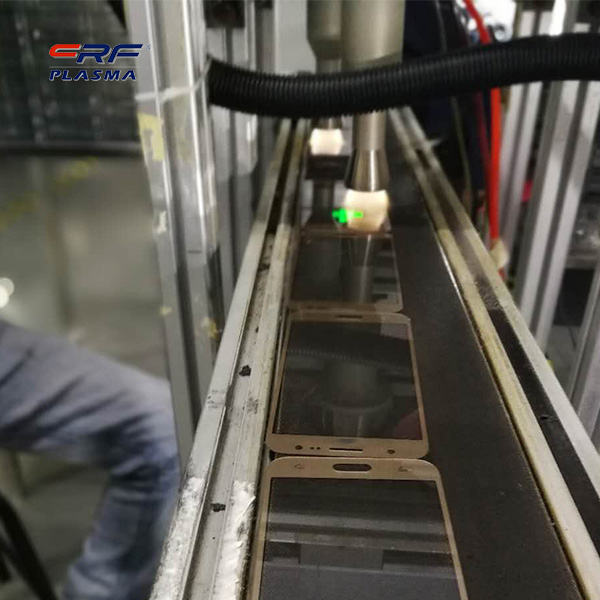
When the SiO polymerized on the surface of the powder, the polymer completely covers the surface of the powder, the contact angle reaches a large, and the surface energy reaches a low saturation state. Therefore, it is possible to change or control the surface energy of the powder by changing the amount of SiO coated on the surface of the powder and the amount of polymer, improving its dispersibility in the organic carrier, and adjusting and controlling the rheological properties of the electronic slurry, Printability and sintering properties. Plasma-polymerized powders are smoother, finer, and less wet than untreated powders. The treated powder can move farther and flow better when splashed.
Fineness is a direct index to evaluate the dispersion quality of ultrafine powder. Therefore, the powder treated by plasma polymerization is not easy to agglomerate and has good dispersion performance. The initial viscosity of the electronic paste prepared with untreated powder increased slightly, indicating the existence of powder agglomerates in the paste. The viscosity of the electronic paste prepared by the powder after treatment conforms to the viscosity change law of a typical pseudoplastic fluid, and the viscosity is shear thinning.
When the electronic paste is screen printed, its viscosity is required to be rapidly thinned and non-stick to the screen under the action of the scraper, and the viscosity can be rapidly increased after printing to ensure the accuracy of the printed graphics. The rheology and printability of the electronic paste prepared from the powder treated by plasma polymerization were better.
After plasma treatment, the dispersion performance of the powder in the organic carrier has been significantly improved. During the plasma treatment process, the SiO formed by polymerization on the surface of the powder reduces the surface energy of the powder and prevents the agglomeration between the powders: on the one hand, it reduces the surface energy difference with the organic carrier, and on the other hand, it reduces the surface energy of the powder. Active groups are added on the surface of the particles, which increases the compatibility between the powder and the organic carrier, so that the powder is not easy to agglomerate and is easy to stably disperse in the organic carrier.
Scan the QR code to read on your phone

TEL:0755-3367 3020 / 0755-3367 3019

E-mail:sales-sfi@sfi-crf.com

ADD:Mabao Industrial Zone, Huangpu, Baoan District, Shenzhen




